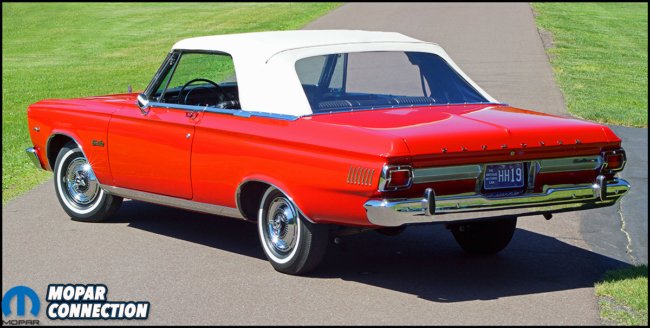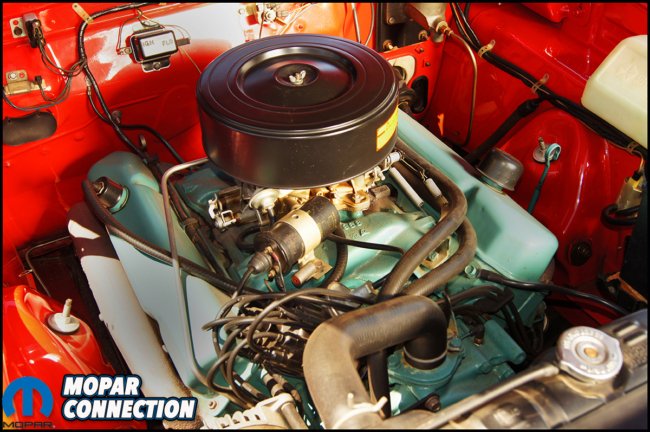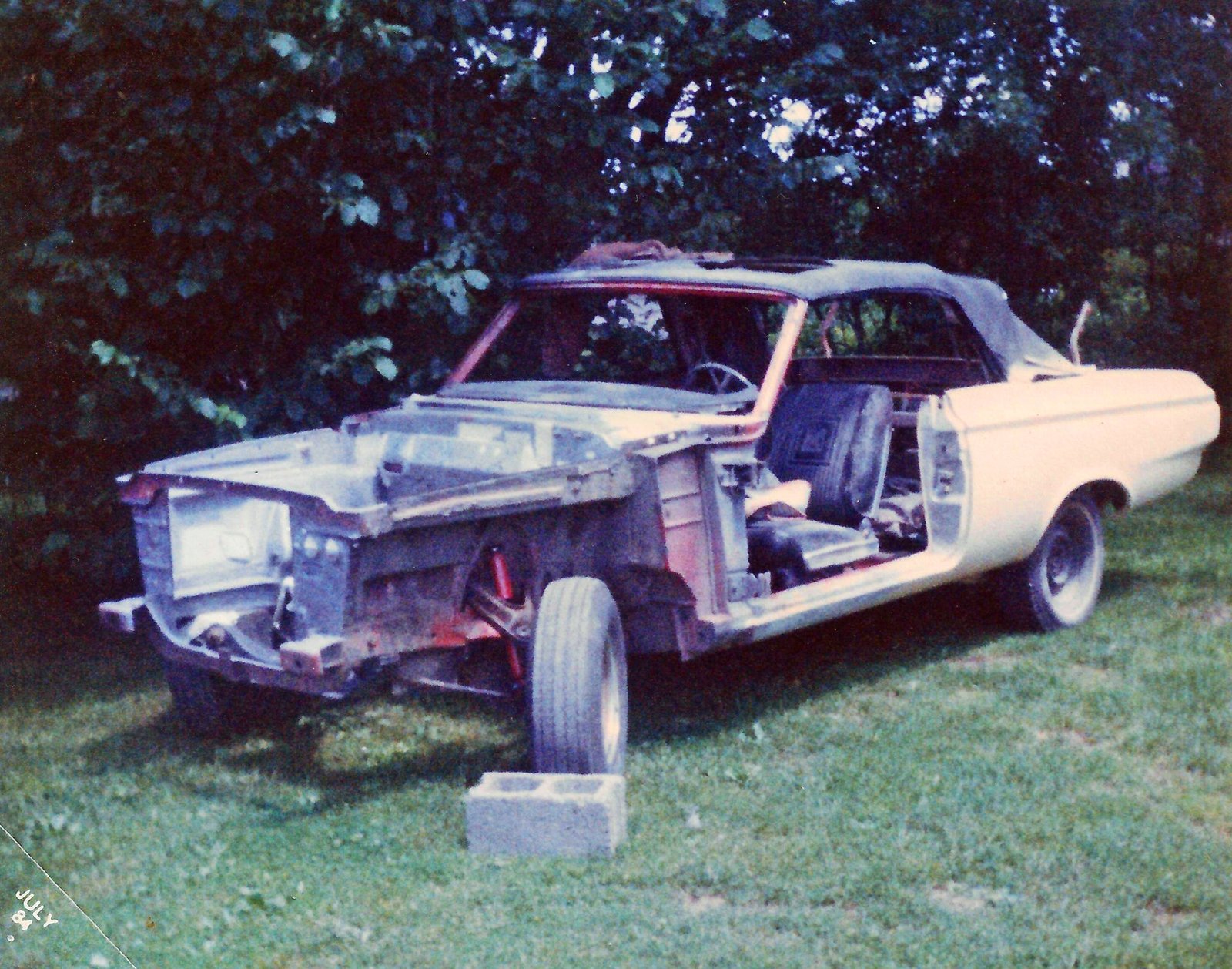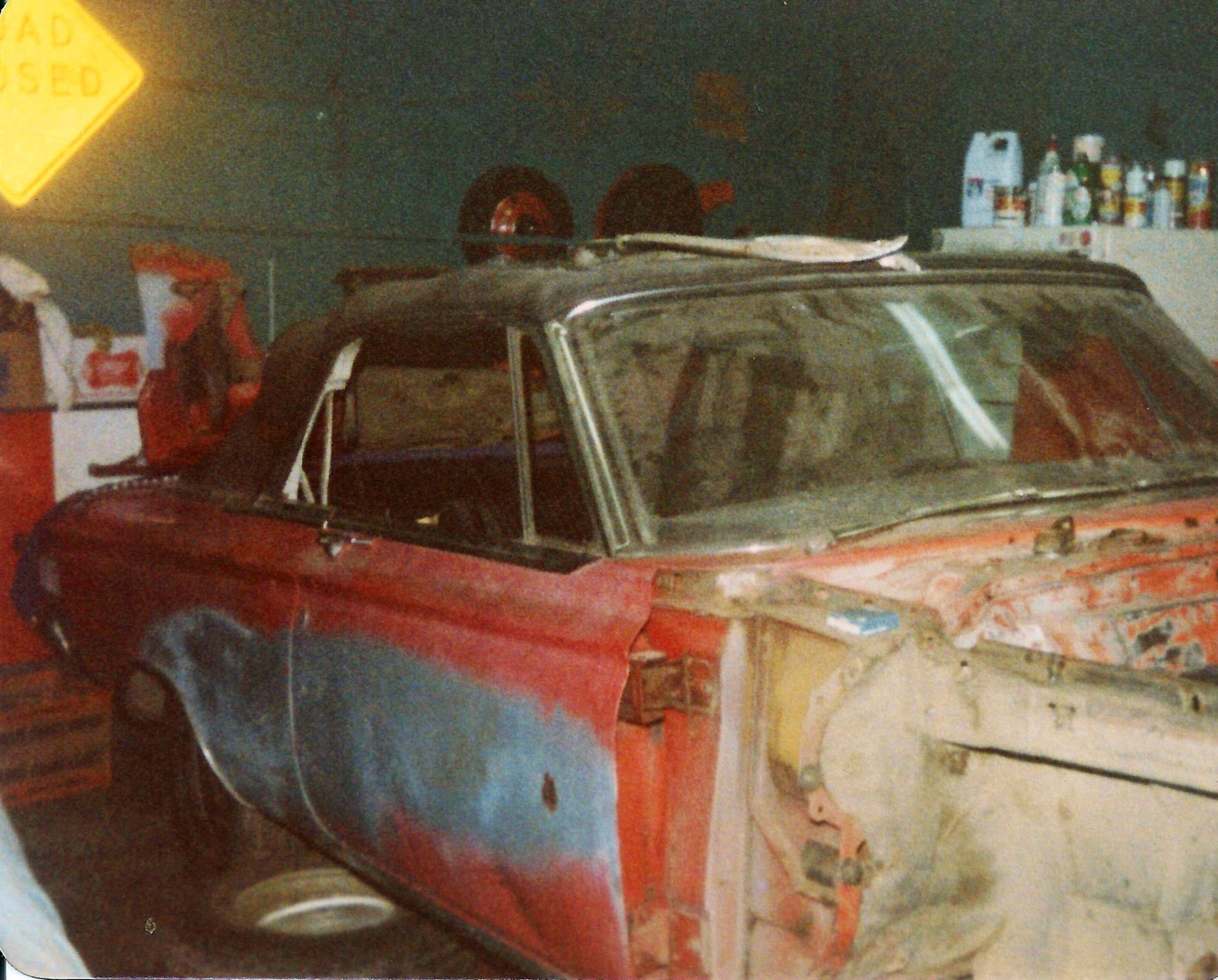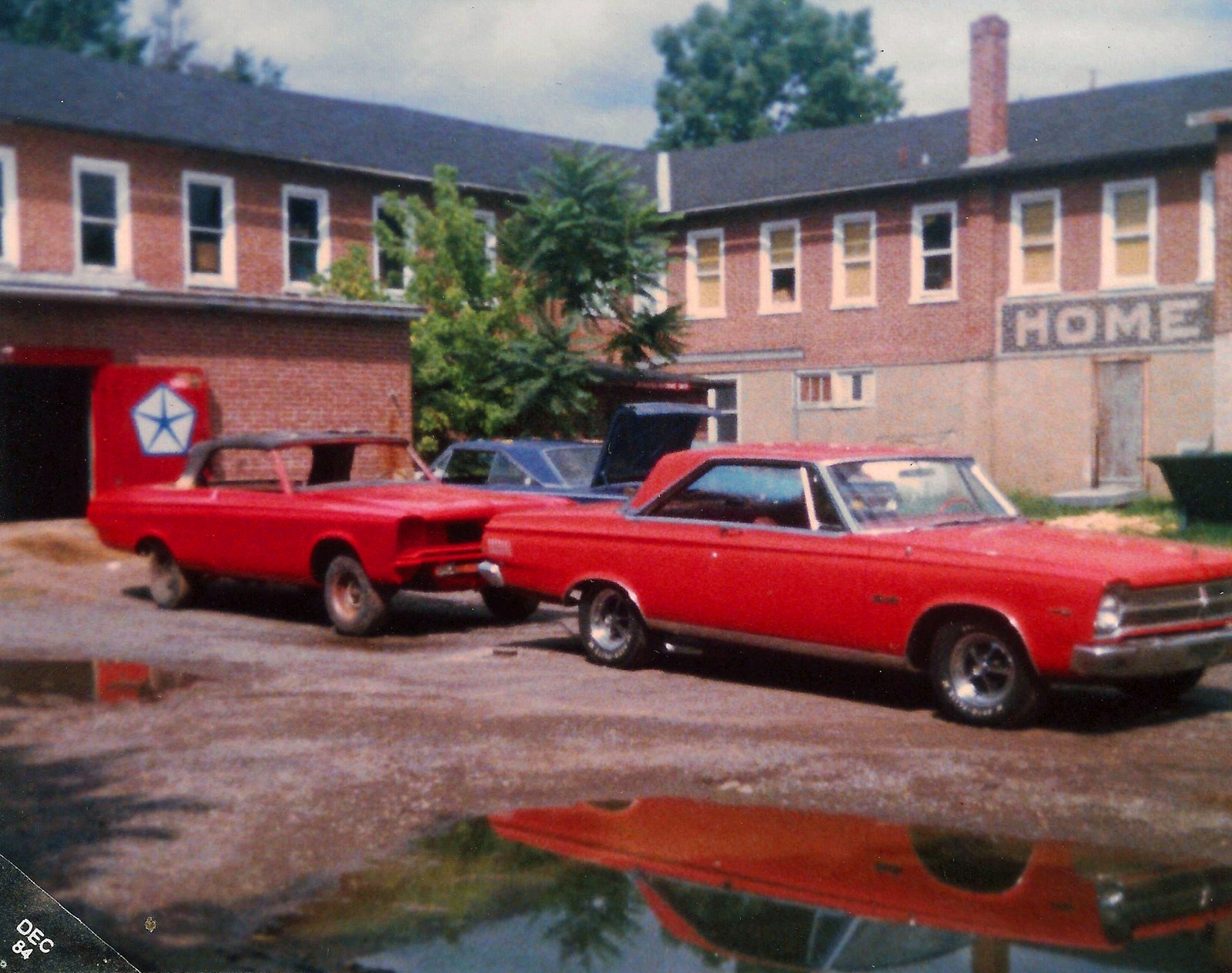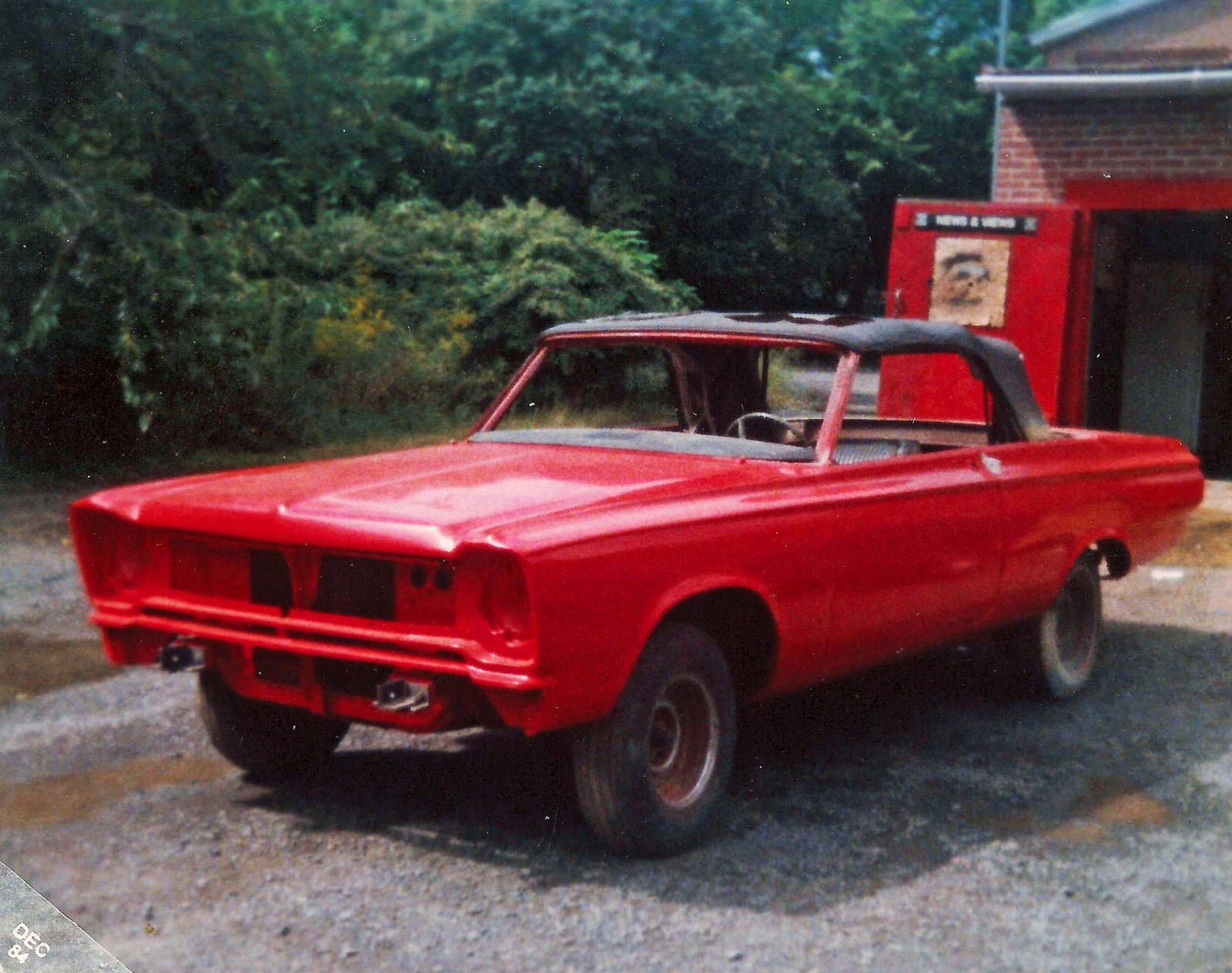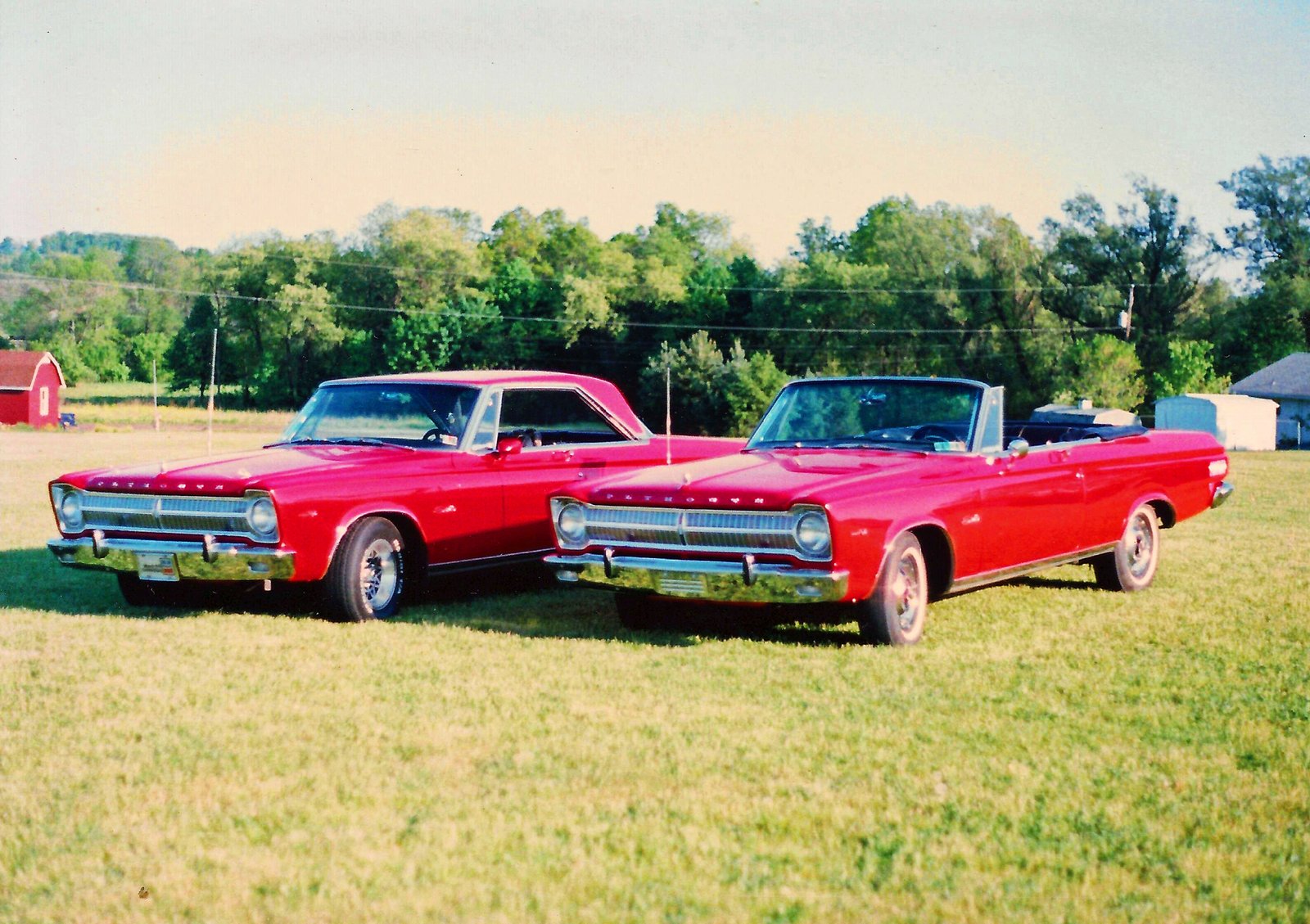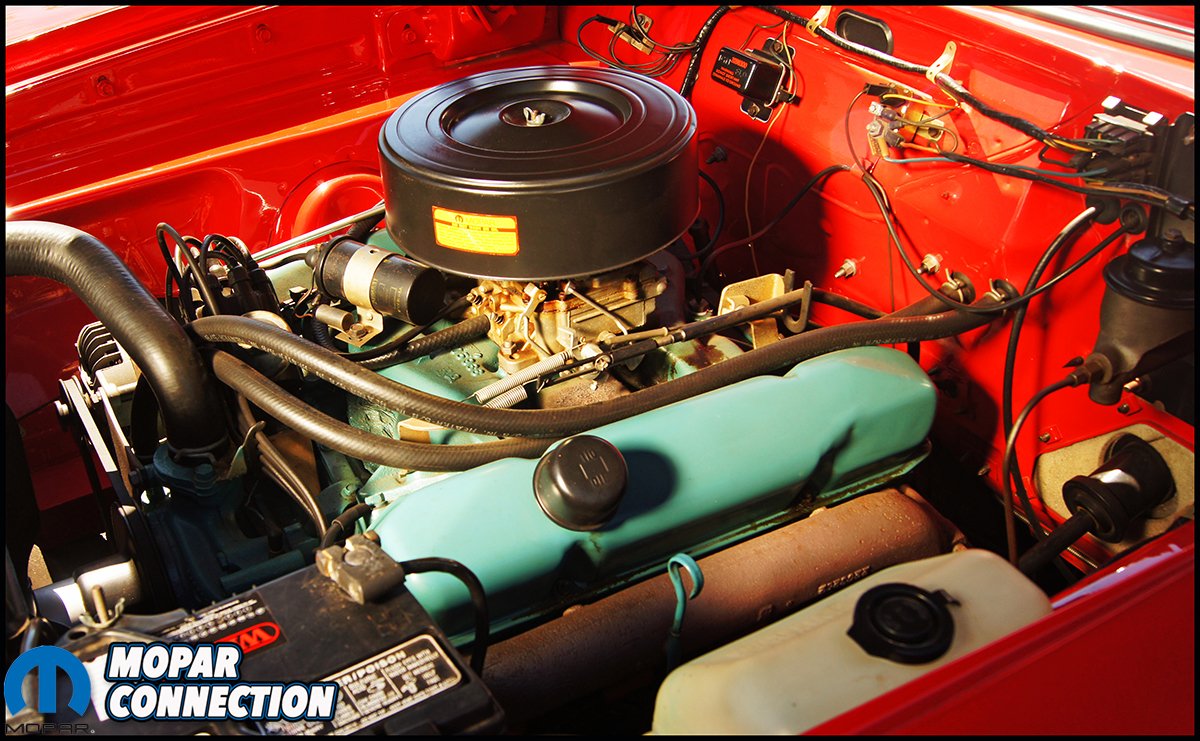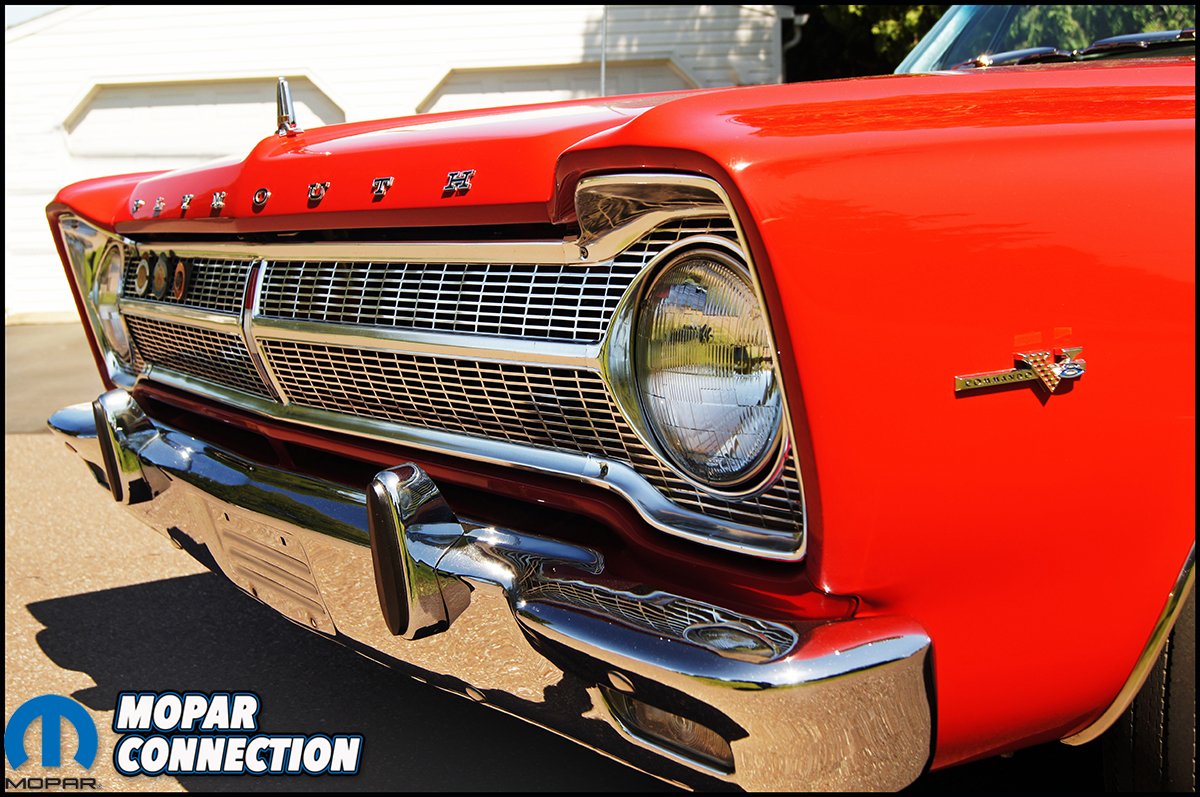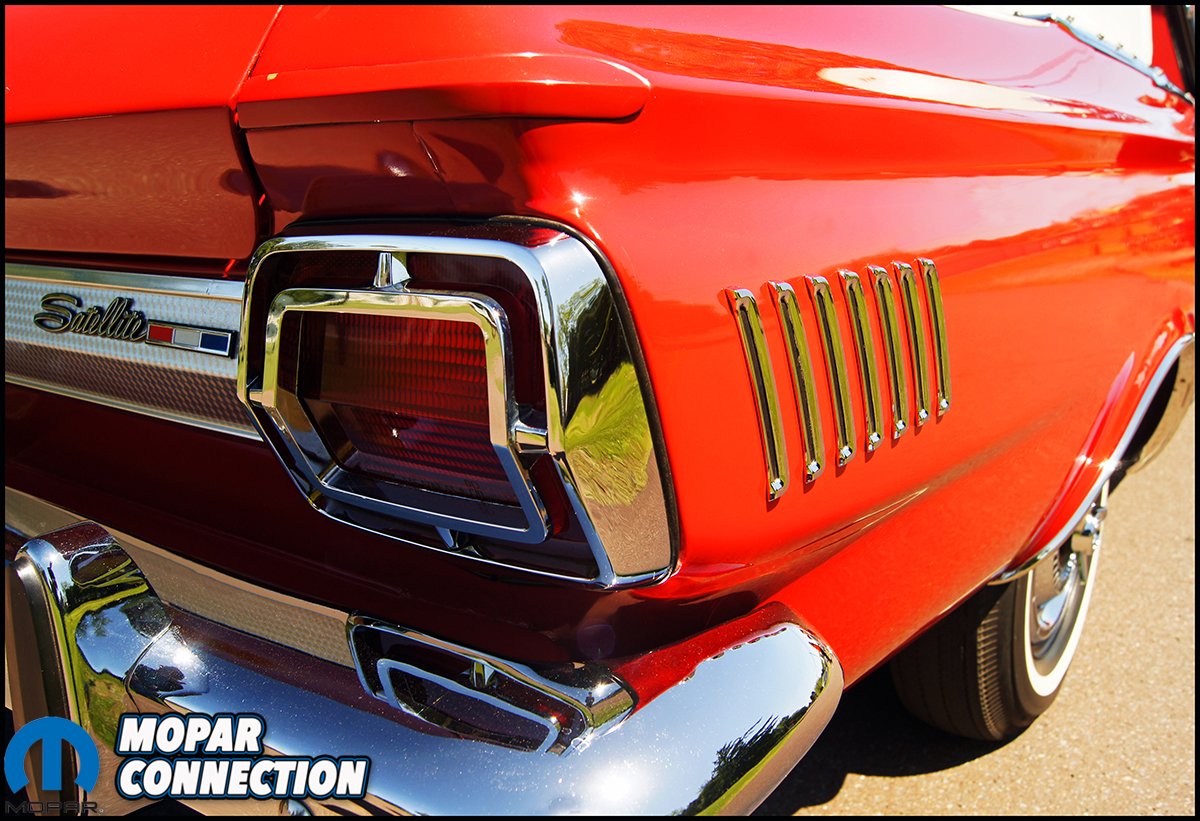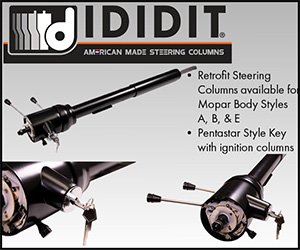
In mid-1964, Plymouth began a successful ad campaign known as the “The Roaring ‘65s”, which introduced the 1965 Plymouth models. Plymouth was still reeling from the 1962 debacle of downsizing their “full-size” car line coupled with questionable styling cues that sent perspective buyers to GM and Ford.
The all-new for 1965 Plymouth offerings consisted of the familiar Fury nameplate being moved from the B-body line to the newly developed C-body line. The designation of the Fury model lines would be the stripper version to the top of the line with the names: Fury I, Fury II, Fury III, and Sport Fury. The C-body line would finally give Plymouth the length, width, and wheelbase to compete with the GM and Ford products.
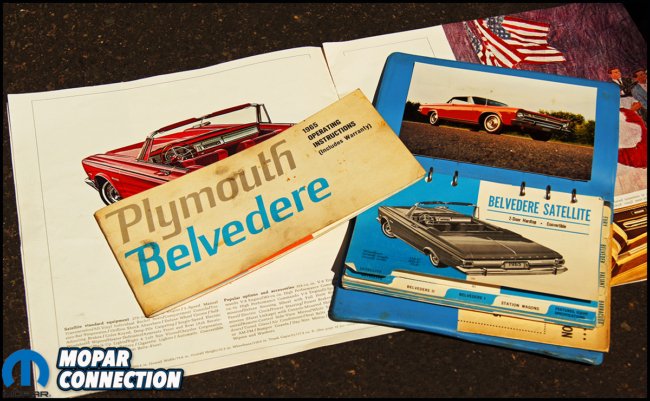
An all-new B-body line would be christened with a nameplate that extended back to 1954, the Belvedere. The new “mid-size” line was basically the 1964 full-size Plymouth with redesigned front fenders and a new chrome package. Following the naming convention as the Fury, the B-body line used Roman numerals to designate the trim level of each car. The Belvedere I was the base model, the Belvedere II was more refined, and the Satellite was the top of the line. Similar styling cues from the Fury, such as trim and instrumentation, were shared with the new B-body Belvedere line.
Rounding out the Roaring ‘65s was the entry level A-body line. This line was composed of the Valiant and the year-old Barracuda. For 1965, Chrysler discontinued the push button automatic selector. The reason why the push button automatic selector was discontinued is unclear, but there are several theories as to why this was done.
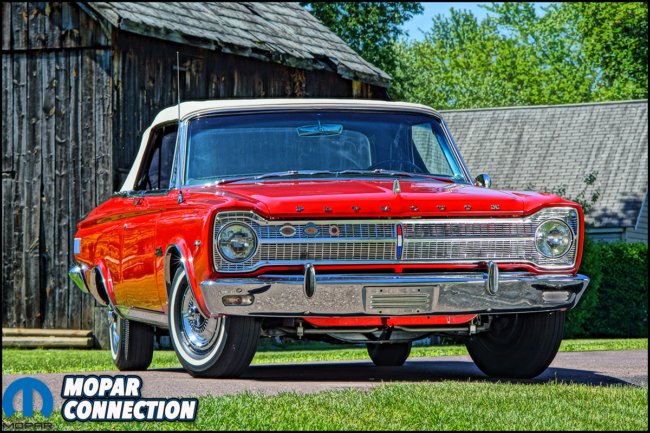
The first theory suggests the cost of the push button was greater than the conventional column shift selector. The second theory acknowledges there was a governmental decree from the Society of Automotive Engineers (SAE) to standardized shift selector pattern to a “PRND21” as a safety development enabling a person the ability to basically drive any car because the shift pattern was the same. Lastly, Chrysler developed the more conventional column shift actuation to attract the Ford and GM new car buyers.
In the end the buttons were gone, regardless of the reason. All the changes for the 1965 Plymouth line up made a difference on the bottom line. “The Roaring ‘65s” proved to be Plymouth’s best year in sales (683,456 units sold) since 1957 and almost a 20 percent increase over the previous year’s sales.
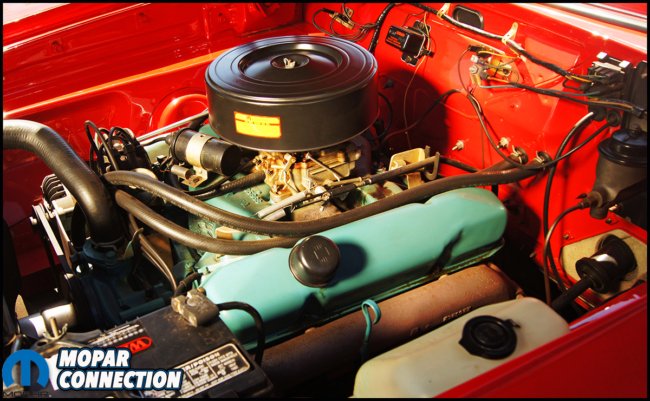
Chip Kramer of Perkasie, PA was lucky to have grown up in a family with a 1965 Plymouth. In 1968, Chip’s parents purchased a used red hardtop Satellite, which was delegated for family transportation until 1977 when the keys of the Satellite were handed over to a 16-year-old Chip. Have been around the hardtop nearly all of his life, which he still owns, Chip had a familiarity of the 1965 B-body line. By chance, he had the good fortune of finding another red ’65 Satellite, a convertible this time, at the 1982 spring Carlisle Automotive Flea Market.
The convertible boasted the original, but well used, 330 hp 383 Commando V8 engine with an un-silenced air cleaner atop a Carter 4bbl. The expelled gases were run through the factory manifolds and into the factory dual pipes. The 383 was attached to a 727 Torqueflite that was rowed by a floor shifter located in the factory center console. A “sure-grip” equipped 8¾” rear end packed with optional 3.23:1 gears rounded out the driveline. Additional options on the Satellite included a full horn ring steering wheel, a front sway bar, a factory tachometer mounted in the console, and the factory light package.
Due to the Satellite originally being a southern car, it was in good shape with very little body rust, but it was riddled with dents and had several missing parts. A full restoration would be required to bring the car back to OEM specifications. In today’s restoration market, parts can be easily found for a Satellite, but finding parts in the early 1980s it was much more difficult.
The aftermarket and reproduction businesses were in their infancy, and the ’62-’65 B-bodies were not at the top of the list to manufacture reproduction parts. To make the restoration more challenging, the internet was not accessible for most people, so the parts chasing became an affair where Chip had to actually scrounge through most of the eastern PA salvage yards looking for parts to complete the ’65 ragtop. To compound the difficulties of the restoration was the fact that the wheel well opening chrome and the chrome around the convertible top opening were one year only components.
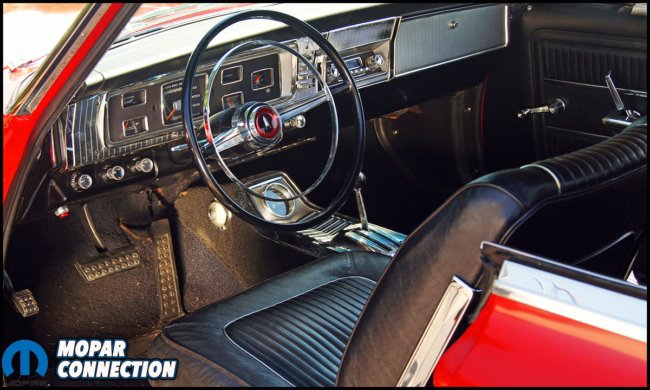
Once Chip had the Satellite home, he began the inventory of what the Satellite needed to make it safe and street legal. The Satellite was systematic disassembled, and Chip prepared the Satellite for a complete restoration back to 1965 factory standards. The 383 and the 727 were rebuilt to factory specifications without major difficulty because of the availability of the engine and transmission parts from Plymouth dealerships and aftermarket resellers.
The carburetor and points distributor were reworked to reestablish their factory new condition. The original suspension and brakes components were rebuilt or replaced with components in “better condition” from donor vehicles.
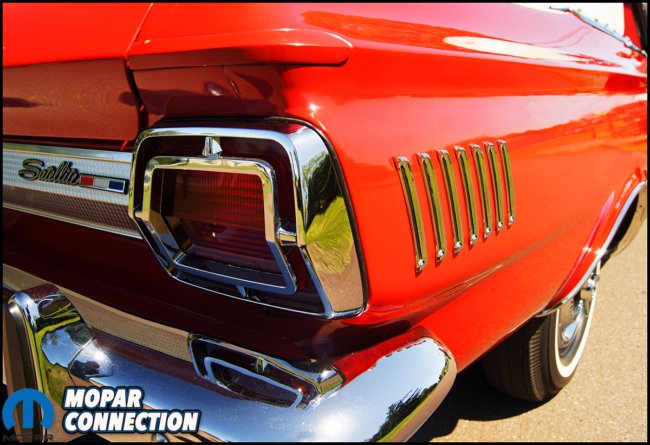
The work on the exterior of the Satellite was uneventful. The major dents and minor body damage on the panels were worked back to shape. Once the Satellite’s shell was in factory form, the exterior was shot in several layers of Ruby Red (PP1) lacquer paint rather than the factory acrylic enamel. After each coat had dried, the Satellite was hand-sanded to prepare for the next coat. This labor-intensive paint was sprayed in 1984 and remains just as radiant today as the day it was applied.
To finish the exterior of the Satellite, Chip attended automotive swap meets and scrutinized the pages of Hemming’s Motor News for the parts he needed. Chip’s resolve provided him with all the emblems, grill, bezels, taillights, backup lights, license plate light, bumper guards, horn ring, the spinner wheel covers, and many other small trim parts. All these parts were new-old stock (NOS) components.
The stainless steel moldings (wheel well, rocker panels, doorjamb trim, etc.) were selected from the many pieces Chip had procured through his years of junkyard visits. The best of the used parts were designated for the Satellite. Any imperfections were repaired, and then the stainless was polished by hand before installation. The parts that were in good condition (door handles, vent wing assemblies, bumpers, and some interior trim) were sent out for re-chroming.
No interior reproduction parts were available in the 1980s. Requiring an extensive search, Chip found black NOS material for the seats. The original hot-pressed inserts on the seats remained, but the NOS material was sewn together with new silver beading. With nothing more than a good cleaning, the original door panels were reinstalled.

The rubber products (weather stripping, the rubber bumpers, and other soft trim gaskets) provided another hurdle for Chip. Only used components could be located. The best of each was selected, carefully cleaned, and then soaked in rubber and vinyl treatment for weeks to rejuvenate the rubber. Lastly, a new convertible top was purchased, but the badly worn boot for the top had to be hand fabricated using the original as a template.
With the Satellite back together by 1986, Chip began showing the car with great success. The Satellite won several awards including the Antique American Club of America (AACA) 1st place Junior award in 1990, the AACA 1st place Senior award in 1990, the AACA 1st place Grand National honor in 1991, and the AACA 1st place Senior Grand National award was bestowed on the Satellite in 1992 and 1994. The entire time the car was trailered to each event in an enclosed trailer.

After an AACA event in Maine at the Portland Lighthouse, Chip and his family did something that very few would consider with a serious award-winning restored car. Chip elected to put the Satellite back on the road and drive it. Chip and his family drove from the AACA event down the east coast. The weather on that trip was terrible; it seemed like it was a never-ending storm. In fact, the trip was plagued by rain from a nor’ easter navigating north up the east coast as Chip and his family motored south.
Chip’s decision was not deterred by the weather; the future would be filled many nice days to drive the Satellite. What could have possessed Chip to start driving the Satellite instead of just showing it? After years of show success, he decided it was time to enjoy the Satellite the way the Plymouth designers had envisioned the Satellite would have been used in 1965. Drive it, enjoy it, and feel the wind in your hair in a Roaring ’65.




